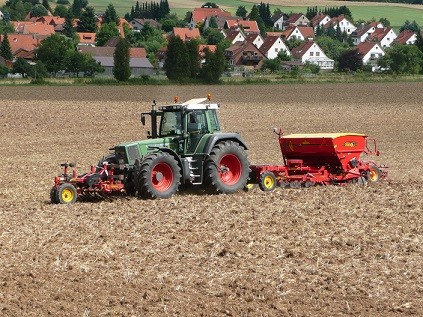Sustainable farming gets down to earth

Related topics
Agriculture & Forestry Innovation Societal Challenges Sustainable agriculture and forestry Austria Belgium France Germany Italy Netherlands Poland Spain Food security, sustainable agriculture and forestry, maritime and martime inland water research and bio-economydate: 20/05/2015
Project: Compatibility of Agricultural Management...
acronym: CATCH-C
See also: CORDIS
Farmers constantly make choices that impact the soil: whether to use manure, how much to irrigate, whether to plough fields or what crops to grow. The CATCH-C project looked for the soil-management practices in use in Europe that best support crop productivity, soil quality and climate stability. Researchers did so through experiments, farmer questionnaires and analysis of national programmes.
Although the team found that there is no single best practice, the project's results broaden understanding. They highlight the trade-offs in choices, barriers to better farming and the need to tailor practice to local conditions. To help farmers and policy-makers make practical sense of this work, the EU-funded project developed a soil use decision-support tool, a list of drivers and barriers to adoption, a list of innovations, and policy guidelines for promoting the best farming practices.
“We aimed to get a bigger picture of how soil management affects outcomes, the way farmers look at specific practices, and the ways that policy-makers look at soil,” says project coordinator Hein ten Berge of the Netherlands’ Wageningen University and Research Centre.
“Agriculture determines what happens with soils, impacting many spheres at the same time,” he explains. “Agricultural soil management governs biodiversity in large parts of the EU, affects climate change, water and air quality, and has direct economic impact.”
The project’s overview helps policy-makers and farmers understand the competing benefits and drawbacks in each choice so they can align decisions to their priorities.
For example, the research highlights how animal manures improve soil quality and soil carbon stocks (locking CO2 from the atmosphere), but at the same time lead to the release of nitrous oxide – a powerful greenhouse gas – as well as water-polluting nitrate. The same holds for retaining crop residues on fields to recycle nutrients back into the soil.
“The principal value of this project is that policy-makers and farmers can make better-informed decisions and choices, given their local priorities,” says ten Berge.
Building the big picture
The CATCH-C team cut the research into manageable chunks to build its overview. First, it identified the main types of agricultural environments and farms in its eight partner countries. Researchers then collected information on these farms’ current practices and related soil quality problems.
At the same time, they identified over 50 practices expected to be good for soil quality, covering aspects as diverse as crop rotation, tillage and cover cropping (the planting of crops to reduce erosion, retain soil fertility, improve soil quality, etc.) along with methods for managing nutrients, water, and crop residues.
Data from long-term experiments by CATCH-C partners and other published research was used to compare the impacts of these practices with those of conventional practices. From its database of results, the team developed a web-based tool to help farmers and advisors choose the right practices for their goals.
Using interviews with 174 farmers from 24 major farm types found in the EU, the team then drafted extensive questionnaires for farmers. Responses from 2 520 farmers showed that while cost and peer pressure were clear factors, technical and environmental barriers also feature.
To address these technical barriers, the team drew up a list of priorities for innovations that could make sustainable farming easier. Mechanical weed control is one option, speculates ten Berge, where intelligent equipment could recognise and remove weeds, avoiding the need for polluting weed-killers.
At the policy level, CATCH-C recommended ways to promote good soil management, finding wide differences in whether and how countries integrate soil concerns into policies. Its study suggests that more priority could be given to sustainable soil management goals, incentives for awareness-raising and innovation to overcome barriers.
Recommendations for better soil management have been shared through academic journals and meetings with farmers and policy-makers. Results are also published on the CATCH-C and EIP AGRI websites.
“This project allowed us to compile a much broader database of information than we could have access to individually, and put us in direct contact with farmers running the EU’s major farm types,” says ten Berge. “I found it enlightening to work with so many people from different disciplines, countries and farm settings.”
“The project has contributed to a more productive and sustainable agriculture.”
